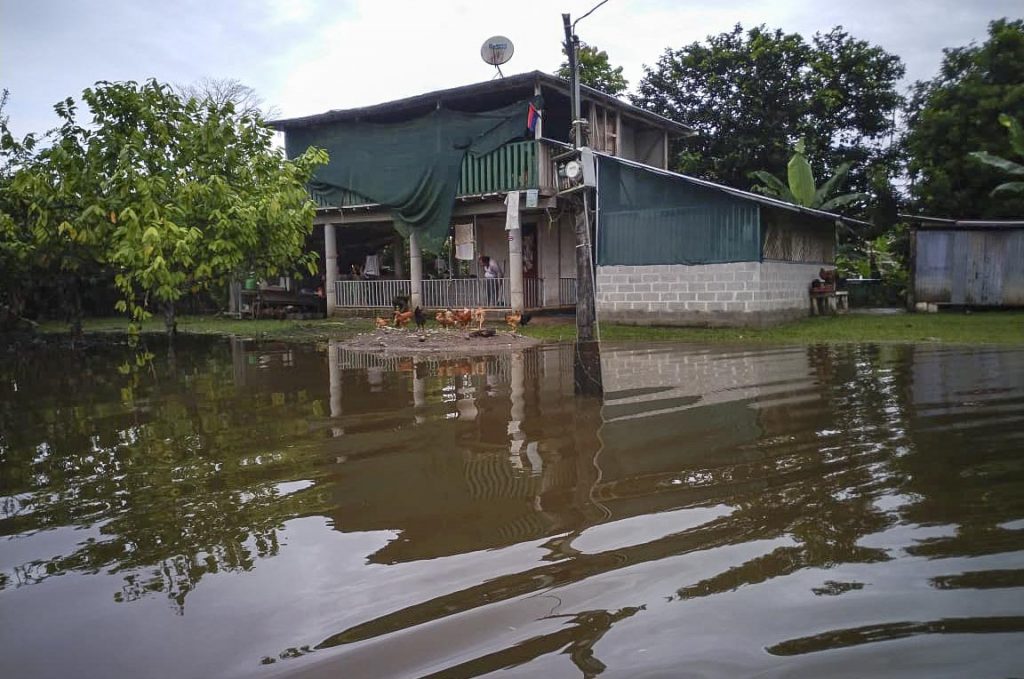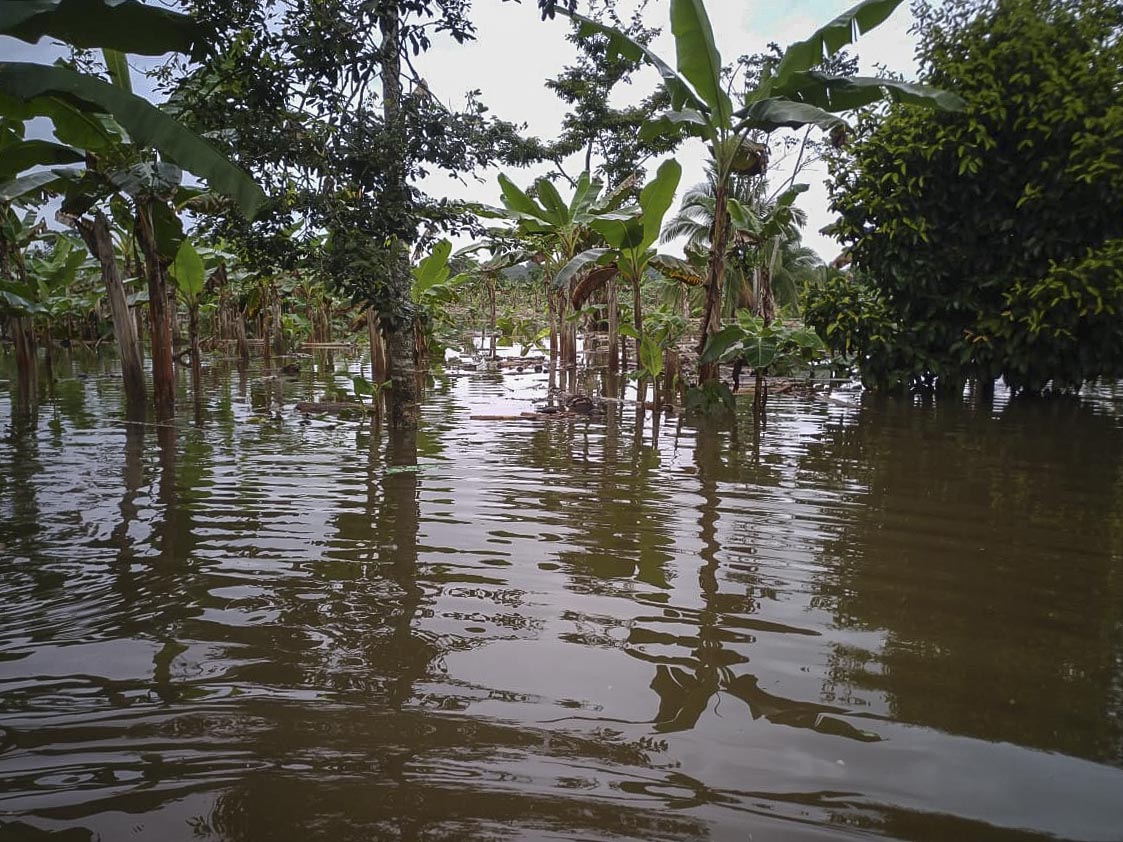When Bermont Rojas, a Sixaola community leader, is notified by radio from the indigenous area of Suretka that the river has reached Level 4, he already knows that he has between five and six hours to evacuate people who are in danger and prepare those who will be cut off after the water floods the streets.
Before this point is reached, the residents of this community on the Costa Rica- Panama border have been alerted by the National Emergency Commission (CNE); furthermore, the Municipal Emergency Committee has already held several meetings and may have already sent one or more buses, loaned by a local business, to evacuate people who want to go to a shelter.
What’s more, as soon as the alarm arises, the Red Cross and the police begin constant monitoring of the rivers.
This capacity for response and knowledge has been fed by the experience of various community entities after years of dealing with floods in southeastern Costa Rica—some significant, some minor.
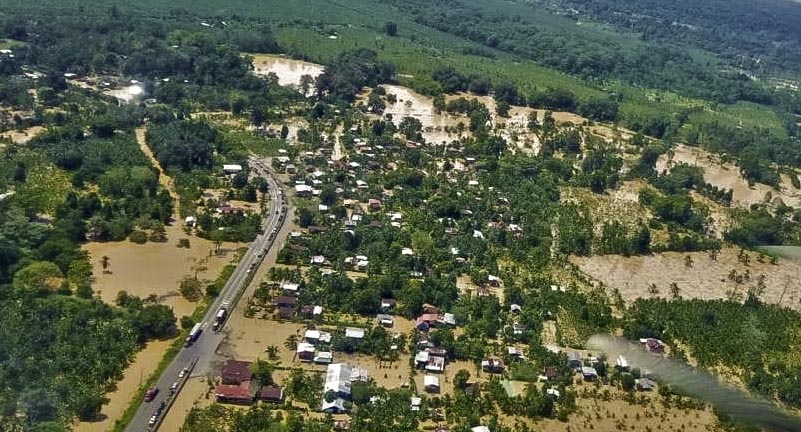
“In the old days there were many consecutive floods, three or four per year,” explains Bermont, who is a volunteer for the Red Cross and the CNE, as well as a member of the municipal committee of Talamanca, canton number four and the largest in the province of Limón. “When there are floods I call and they send me four more volunteers. I have to deal with the operational part in rescues more than anything, when there are trapped people who have not been able to get out because the flood surprised them.”
Bermont notes that during the 32 years that he has been a volunteer, he has learned to maneuver the river’s turbulence in a panga, or fishing boat.
But Bermont does not do this job alone. Various entities present in the community or in Talamanca, such as the Red Cross, police and firefighters, come together to attend to emergencies. For example, they distribute food door-to-door for those who were trapped in their homes, or did not want to leave them for fear of thefts.
And not only the institutions come together in the wake of disasters: participants in the process say the unity of community leaders, and the awareness that they can reduce vulnerability together, are fundamental.
The CNE has communication radios in various sectors of the Sixaola River: from the highest elevations, where its five tributaries are, to the community of Sixaola.
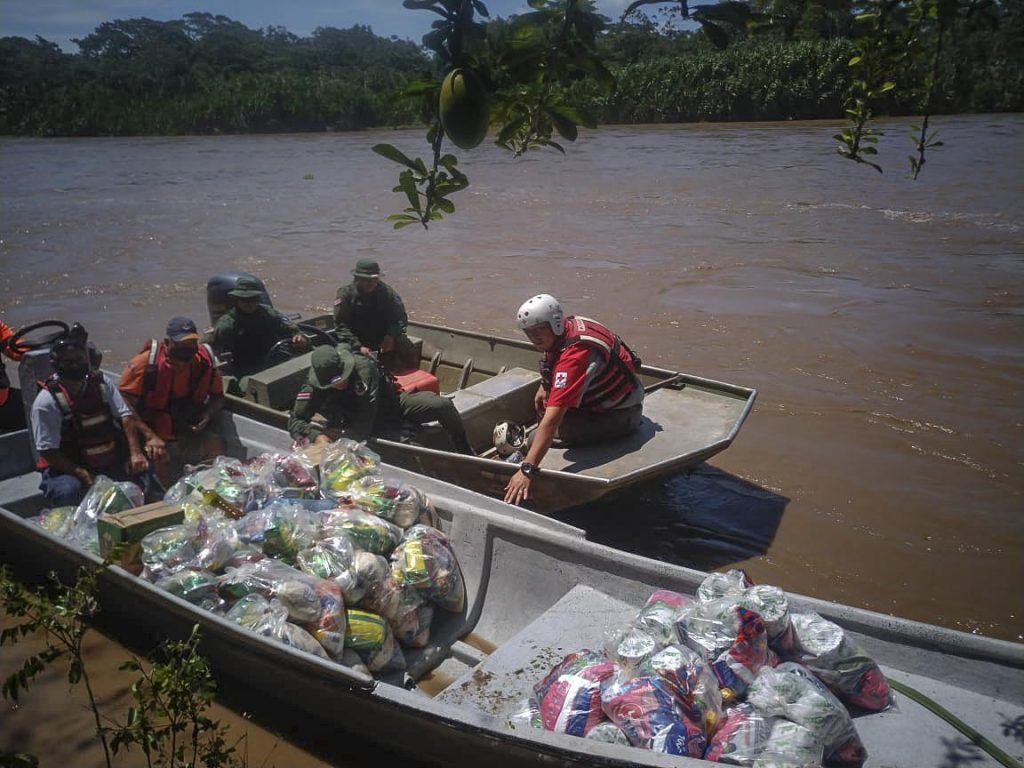
“We have three very knowledgeable people in Suretka, ian ndigenous territory of Talamanca. We assigned levels to the river: Level 1, Level 2, Level 3. When they tell me ‘Golfito [Belmont’s nickname in the area], we are at Level 4’ we know that water is definitely coming and we have five or six hours to prepare people.”
“We have rescue equipment for 10 people donated by the International Federation of the Red Cross,” says Bermont, which they use to “get onto the water” at once. The group used to have engines and pangas from the CNE that were kept in Sixaola, but the CNE took them away because they had deteriorated during many years of use. Bermont says that leaders’ hope is to be able to replace them in the short term.
While rescues are being carried out in the field, the mayor of Talamanca, who by law is the coordinator of the Municipal Emergency Committee, holds ongoing meetings with the rest of the committee and coordinates actions with institutions such as the Ministry of Health, the Ministry of Agriculture, the Institute of Agrarian Development (INDER), the Mixed Institute of Social Aid (IMAS), and the CNE.
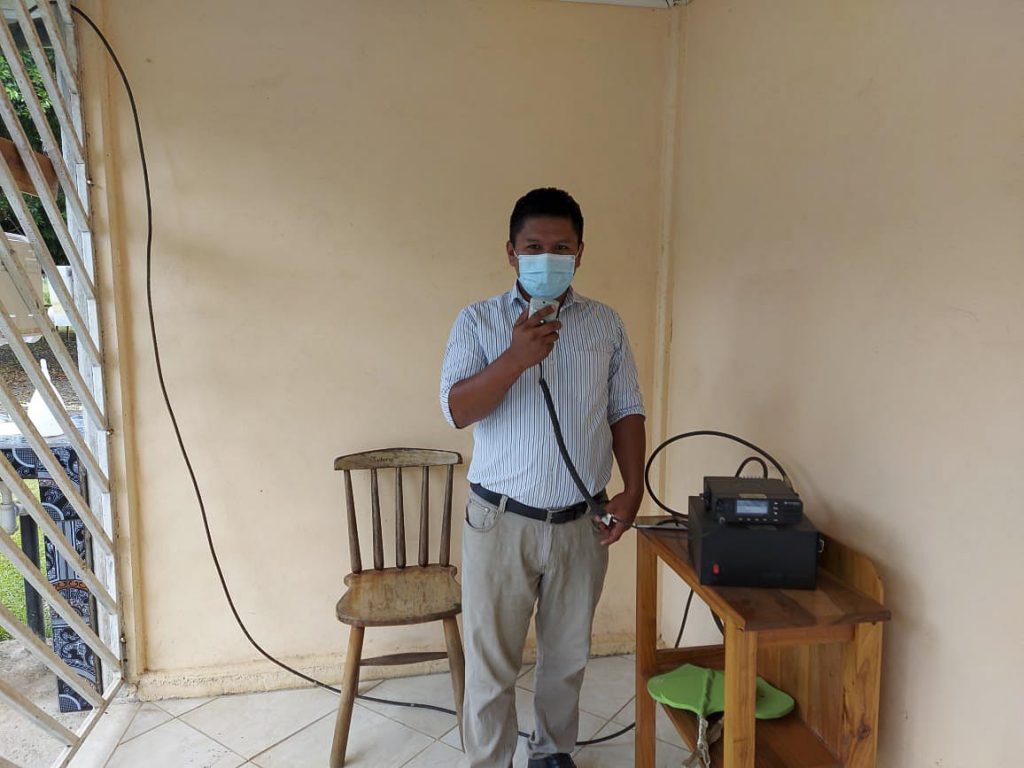
A history of floods
The inhabitants of Sixaola still remember the “llenas” (as floods are popularly known) of 2005. Between January 8-10 of that year, heavy rains caused flooding in the Caribbean,from Sarapiquí in the north and Sixaola. Then-president Abel Pacheco said on Jan. 11 that the reconstruction of what was destroyed would require an investment of between ¢7-9 billion (approximately $11.3-14.5 million). In Sixaola, hundreds of people took to shelters.
Sixaola residents who did not go to the shelters took as a refuge the elevated road that leads to the bridge between Sixaola and Guabito, on the Panamanian side.
“Everyone heads out there [during floods]. They just leave someone to take care of the house so they don’t get robbed. In 2005, we took out rolls of black plastic that we broke into pieces, and people made tents. Many brought their hot plate, gas, cars, motorcycles, pigs, horses, dogs… it is a small space, but everyone gets comfortable with animals and everything,” says Bermont. “Since no one could enter or leave because all the streets were closed, the CNE authorized purchase orders” so leaders could buy food at local supermarkets.
Those with cooking equipment fixed meals for others until the water receded. With these floods, this usually takes two to three days.
Fortunately, this scene has not been repeated in Sixaola since 2005. Bermont says this is largely thanks to a retaining wall that was built with funds from the Atlantic Slope Board of Port Management and Economic Development (JAPDEVA), which largely stops the water.
In addition, Bermont says that today, it is recommended that all new houses in Sixaola are built at a height of at least three meters to avoid problems in a small or medium flood.
“In the 3.5 houses, people don’t even leave anymore” during a flood, he says. “They stay there while the flow decreases.”
Emergency management in diverse contexts
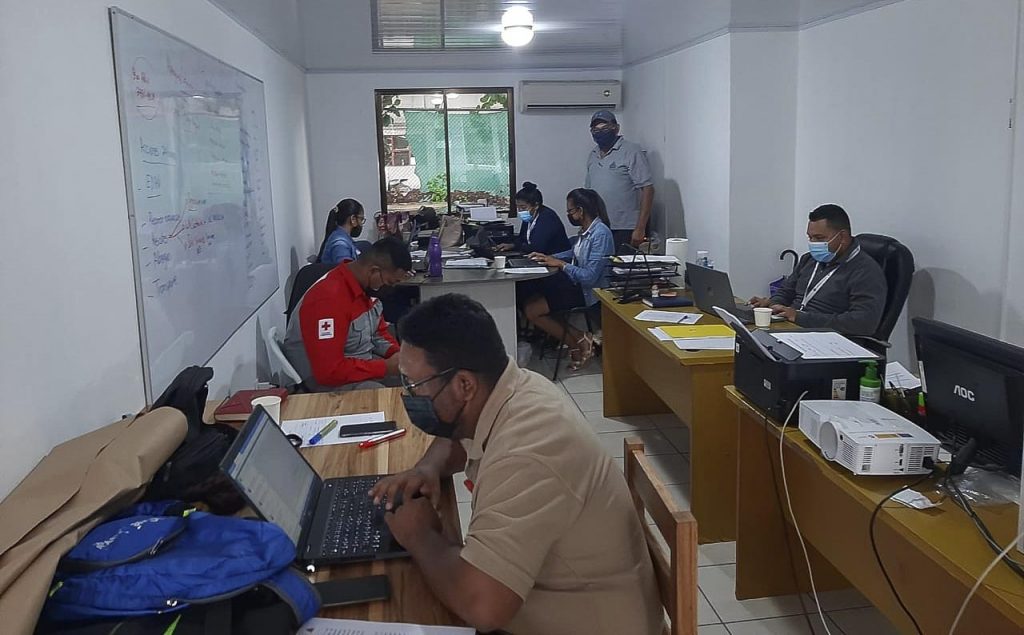
“Disasters can be managed.”
With this phrase Maycol Morales, member of the Executive Committee of the Municipal Emergency Committee of Talamanca, explains the main work of this entity, a task that he calls emergency management.
“What the Municipal Committee does is basically respond to an incident in an articulated way,” he says. “It organizes the community and the institutions.”
The Executive Committee of the Municipal Emergency Committee of Talamanca functions as a Board of Directors, with a coordinator—the position that by law corresponds to the mayor—a deputy coordinator, a secretary, a member, and a treasurer.
Like its counterparts in other communities (such as the District of Monte Verde, the focus of our previous report), the Municipal Committee also has working groups address specific issues. Maycol is an official of the National Children’s Trust (PANI) in Talamanca, and in the current context of a pandemic, he is in charge of the Working Group for Territory and Indigenous Peoples that coordinates issues related to COVID-19. However, Maycol explains that the community’s primary goal in creating these groups was to respond to events such as floods.
President of the Red Cross at the regional level in Limón and a Red Cross volunteer, he says that another challenge related to responding to emergencies in the area is the great diversity and size of the territory that the committees must attend to. To respond, the committees have been divided not only at the thematic level but also at the geographical level.
Talamanca is the largest canton in the Limón province and the second largest in Costa Rica, with a population of approximately 43,000. Within the canton are four districts—Talamanca, Bratsi (Bribri), Sixaola, Cahuita and Telire—and four indigenous territories, Kekoldi, Talamanca Bribri, Talamanca Cabécar and Telire, which is located in Alto Telire.
The canton is home to renowned protected areas, such as Cahuita and the Gandoca-Manzanillo refuge, as well as to the border area, Sixaola. This area is affected by poverty, some commercial sexual exploitation, and problems with water (which decreased with the construction of a large aqueduct). A cross-border population comes and goes, including indigenous Ngöbe on both sides of the border; Indigenous Panamanians often come to Costa Rica to give birth.
All the dynamics and lack of regulation of the border region are “important in order to understand [community] organization there,” says Maycol.
He says another factor is the canton’s problems with legal conflicts related to the maritime zone. The most recent case involved a territory that must be returned to the Keköldi indigenous group.
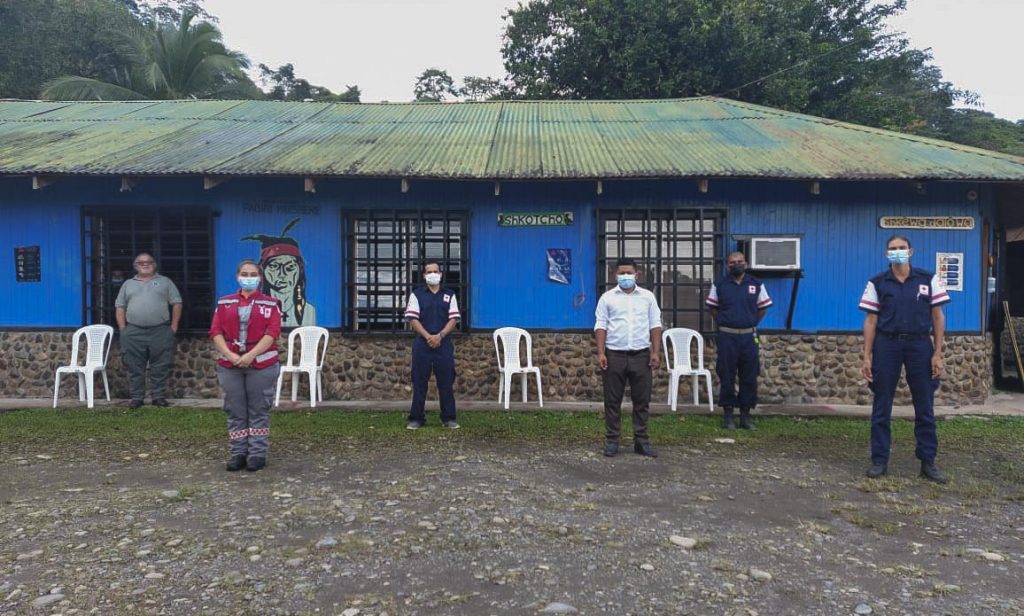
For all these reasons, it has been essential for cantonal leaders to strengthen local community committees, which do not serve a single community but rather sectors. For example, Sixaola is divided into four community committees; a project to create more local committees was underway, but stopped due to the COVID-19 pandemic. Where there is no community group in place yet, cantonal leaders work with a local development association or tourism chamber, Maycol says.
He indicates that continuing to build hyper-local capacity will remain important, since changes in the continental shelf have caused changes in the river and in the dike that contains it: “This has meant that when there are floods and there is high tide, the river returns and the communities flood much more easily, so we have had floods in Talamanca even on sunny days [in the dry season].”
Whatever happens, the community is the key.
“Sometimes the impact is not due so much to the amount of rain, but to how the community is organized and here comes the role of risk management,” says Maykol, noting that “we are more experts in flooding because it happens so regularly.”
Taking advantage of the strength of indigenous structures
The development of hyper-local structures has had its own life in indigenous territories. By law, their government structure is a local association of indigenous development, the highest authority within this territory, according to the Constitutional Court.
For this reason, the Municipality of Talamanca, as a local government, has four other local governments within its territory, representing the indigenous territories of Kekoldi, Talamanca Bribri, Talamanca Cabécar and Telire. These organizations have proven to be effective in responding to and monitoring threats.
The Bribrí-Talamanca indigenous association (ADITIBRI) represents the Bribri ethnic group, where there are some 40 communities and in which “we have auxiliary structures that are the Neighborhood Councils that work in around 22 communities,” explained Enmanuel Buitrago, vice president. “At the emergency level, we have channeled all the processes through these communal structures.”
According to this leader who lives in Bribri, before 2019, a structure of approximately 52 local emergency response groups were used instead of the official associations; these were dysfunctional. “We did a test at that time with five structures to contact them and it was practically impossible. The phone numbers didn’t exist, or people were not there.”
“As an association, we recommended to the CNE that we work through the [indigenous] councils… the Board of Directors made important agreements, such as the reinstallation of communications radios” and informing the councils about emergency issues. Among the 40 communities that make up the indigenous territory, there are now nine radios in Alto Urén, Duriñak, Cachabri, Yorkin, Ak Bërie, Suretka, Sepecue, Amubri and Arenal, which are managed in coordination with the CNE.
“In these communities, which are the most remote, daily monitoring is carried out in the morning, noon, and evening, even if there is no emergency,” while in an emergency, the weather and state of the rivers is monitored using the radios every three hours, Enmanuel explains. “We have WhatsApp groups where the weather is reported. For example, if in Bajo Cuén or Coroma it is raining hard and the river flow increases, the managers pass on photographs and reports that are systematized and sent to the CNE. We try to inform the community about what is happening.”
The organization also set up territorial radio and cultural radio services to keep the population informed.
The association’s board and 15 officials provide support to families and direct aid received in an emergency, or any other community challenge.
“The 22 Neighborhood Councils hold permanent sessions for emergencies, territorial or other issues. There is a constant link,” Enmanuel says. “This helps us monitor the events that may happen, but also to strengthen projects that we develop at the community level.”
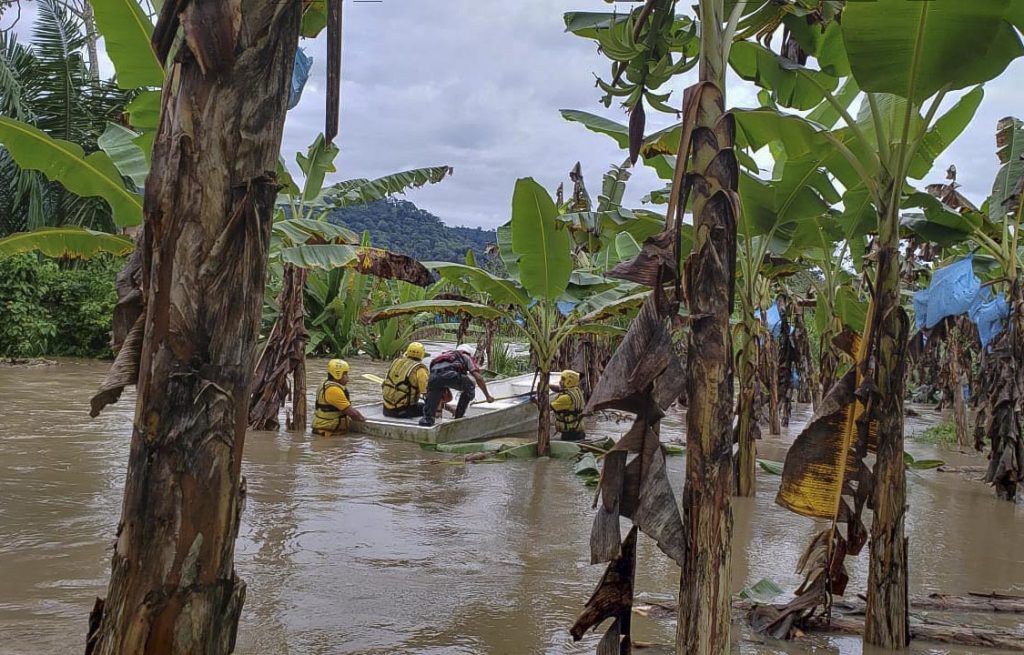
New on the radar: tsunamis
The coastal area of Talamanca is also organized to respond to an eventual disaster, and to reduce damage and vulnerability to a threat. As in the indigenous territories, cultural particularities of these areas—especially in Cahuita and Puerto Viejo, where the mix of cultures includes the Afro-descendant population and a variety of European influences—affect the way in which these efforts are developed.
Leticia Gallet is part of the Caribbean Tourism Platform, which groups together public entities, enterprises, tourism MSMEs and their value chains in the Huetar Caribe Region. This organization works closely with the Municipal Emergency Committee of Talamanca on emergency response issues.
Leticia says that this committee holds meetings every month and works throughout the year to have emergency plans, while in the event of a hurricane, tsunami or earthquake, this structure joins up with local emergency committees in the communities that have them.
“Costa Rica is super organized on the issue of emergencies at the local level, with the participation of communities. That’s the strength of the system: organizations that can coordinate everyone’s work and act quickly when there is any kind of emergency, with people who are trained and meet all year,” she says. A French woman who lives in Cahuita, she says that in her home country, she has never seen an organization like the Costa Rican group to which she belongs. In France, local people don’t attend to emergencies because it is considered a job for professionals, so it takes more time there to solve a problem, according to Leticia.
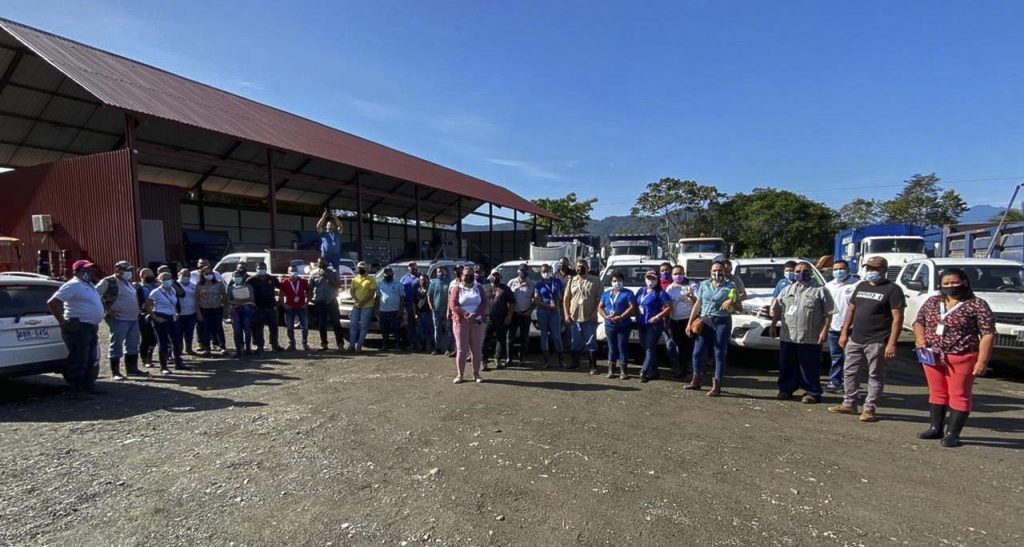
For example, Leticia, who is also a member of the Talamanca Municipal Emergency Committee’s executive group, remembers an emergency in France that caused people in some sectors to wait for months for electricity and water, while “here everyone knows what to do. They report the damage to public institutions and everything is done quickly.”
“There are many things that we already know from the training we have received. We know that if there is an earthquake like the one in 1991, the first thing that will take from us is routes and communications, so emergency radios were installed on the coast,” Leticia said: one in the Cocles Tourist Police delegation and another that is usually kept at the Cahuita police office. “In an earthquake, I know where to go, where I can find the first emergency radio. I know how to start working, organize things, how they are all spread over the territory. I am very proud to work on a team like this.”
In addition to receiving training on issues such as incident command system, emergency organization, and shelter management with institutions such as CNE, Red Cross, Firefighters and the Development and Assistance Resources Agency (ADRA), the area has recently received training on tsunamis.
According to Maycol Morales, the traditional argument has been that tsunamis will affect the Pacific coast more significantly, but trainers “have opened our eyes to the reality that, in the South Caribbean we are not prepared for a tsunami… they have been training us or generating information to be aware and clear about how the effect can be devastating.”
The Municipal Committee and coastal organizations have worked in recent years with the Caribe Tsunami Warning Exercise, an annual activity by the Intergovernmental Oceanographic Commission (IOC) of the United Nations Educational, Scientific and Cultural Organization (UNESCO).
The exercise, which is carried out throughout the continent, made it possible to make a “first draft of a tsunami plan. We still have to finish it. We worked very hard in 2018 and 2019, but we stopped in 2020 with the pandemic,” Maycol explains.
Among the lessons learned this far, for example, is that in the event of a tsunami residents should travel on foot or by bicycle, because vehicles generate traffic and that is more dangerous. More work remains, including marking evacuation routes, safe places where go, and how to save lives in just minutes.
“The main thing is to save lives and the idea that there are some places where people take refuge, because the response teams are not going to get in all at once,” adds Maycol.
Other institutions with which they have been working on the issue of tsunamis are the CNE and the Center for Research in Marine Sciences and Limnology (CIMAR) of the University of Costa Rica.
The CIMAR is in charge of the first tsunami warning, which immediately activates official communication mechanisms. The information first reaches the CNE’s chief of operations and, from there, the Municipal Emergency Committee.
“We are all connected by Whatsapp and by CNE radio communication,” says Maycol.
The community leader specifies that in Cahuita, tsunami evacuation sites have already been identified: for example, near the cemetery and in the area known as Fila Carbón. However, they have not been able to make progress in identifying more evacuation routes due to the pandemic.
“We must have a map in the community, maps for tourists in English and Spanish. We are taking the first steps,” he says. Local governments have been organizing and fixing alternate highways, which now “are more passable.” He adds that for greater impact, the groups working on this issue need more support from residents who are not yet part of any participating group.
Onward
In addition to the pending issues on tsunami training, Maycol says that Talamanca’s emergency leaders and volunteers will continue working on other issues, such as consolidating and reinforcing a specific structure for emergency care in the coastal zone, a task that they hope to continue once the pandemic is over.
In indigenous territories, some communities, such as Bajo Cuén and Mojoncito, are located in a delta with a high risk of flooding. “A kind of retaining wall has been placed to try to avoid a disaster, but over time it has been deteriorating. That task is pending,” he adds.
According to Bermont Rojas, flooding last April made it possible to visualize certain weaknesses in the Sixaola retaining wall due to the passage of time and the weakening of the river. Local committees hope to raise funds in the future to reinforce this.
Likewise, both leaders referred to the need to find a solution to the vulnerability of harvest such as those banana, squash and corn, which sometimes flood because the water rises through channels that have been made to enable floodwaters to recede more quickly.
What’s clear is that Talamanca is home to highly committed people who work ad honorem for the safety and quality of life in their communities. Leaders are already looking for younger people to be trained in these issues, who can relieve the current community leaders as they phase out.
When an emergency happens, “people already know that they have to make a situation report. They are like the eyes of the emergency, so that the CNE has all the necessary information to deal with it” says Maycol Morales. “There are several colleagues who know how to do that. I can die in peace now.”
